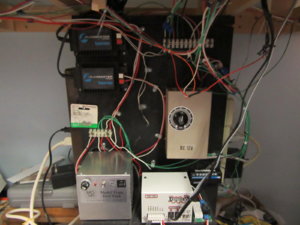Greg@mnrr
Section Hand
I still use 12 volt incandescent lamps on my CM&NR and run them at usually 9 volts. I have not seen a lamp life expectancy table for running quality 12 volt lamps at various voltages.
At work, the lighting crews used to install 240 volt lamps in hard to access spots like older elevators and exit lights and operated the 240 volt lamps at 130 volts which increased their life by untold years. I been gone over six years and I'm sure the 240 volt lamps that were installed when I was working are still operating. A 100 watt 240 volt lamp operating at 130 volts provides the light output of a 50 watt lamp.
Now LED's are taking over incandescent lighting in commercial applications.
As anyone seen or have a chart like this for 12 volt lamps?
Thanks.
Greg
At work, the lighting crews used to install 240 volt lamps in hard to access spots like older elevators and exit lights and operated the 240 volt lamps at 130 volts which increased their life by untold years. I been gone over six years and I'm sure the 240 volt lamps that were installed when I was working are still operating. A 100 watt 240 volt lamp operating at 130 volts provides the light output of a 50 watt lamp.
Now LED's are taking over incandescent lighting in commercial applications.
As anyone seen or have a chart like this for 12 volt lamps?
Thanks.
Greg


